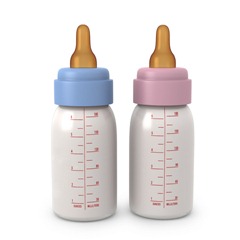Our Poisons, Our Children, Ourselves
by Dominique Browning, NEW YORK TIMES, May 9, 2011
 SUDDENLY, there’s a baby boom going on around me. I’m making weekly shopping trips to stock friends’ nurseries, and I’m struck by how many signs on the shelves advertise BPA-free bottles, BPA-free sippy cups. It breaks my heart. Manufacturers might be removing BPA, a chemical used to harden certain plastics, from their products, but they are substituting chemicals that may be just as dangerous, if not more so.
SUDDENLY, there’s a baby boom going on around me. I’m making weekly shopping trips to stock friends’ nurseries, and I’m struck by how many signs on the shelves advertise BPA-free bottles, BPA-free sippy cups. It breaks my heart. Manufacturers might be removing BPA, a chemical used to harden certain plastics, from their products, but they are substituting chemicals that may be just as dangerous, if not more so.
“BPA-free” seems like a step in the right direction. BPA, or Bisphenol A, is a synthetic estrogen that disrupts normal endocrine function. There is growing evidence in animal studies that exposure during fetal growth affects the development of reproductive systems and, in offspring, can lead to neurological problems. BPA has also been linked to prostate and breast cancer.
BPA has been found on money, likely transferred from credit card and A.T.M. receipts printed on thermal paper that contains BPA; it’s also in dental sealants, in the lining of food cans, and in many other items.
Because the federal government has taken no action to ban or even limit BPA, some states have taken matters into their own hands. Maine just approved a ban on BPA in reusable food and beverage containers that will go into effect next year; Oregon is considering banning it in sippy cups and baby bottles.
In apparent recognition of the consumer clout new parents wield, some manufacturers have stopped using BPA. You would think this proves the marketplace can take care of these problems, right?
Wrong. Consider the thermal paper that comes out of cash registers. Its BPA passes through the skin into the bodies of anyone who works at check-out counters, as well as their customers. Appleton, a specialty paper company, markets a BPA-free thermal paper that uses Bisphenol S instead. The Environmental Protection Agency has a voluntary program that is evaluating BPS and 17 other possible substitutes for thermal paper, but has not yet completed its analysis. Until it does, it will not endorse any alternatives.
In the few, limited tests conducted outside the United States, BPS shows estrogenic activity — not as strong as BPA, but not a good sign. BPS is now used in the United States to make PES (polyethersulfone) plastic. Some baby bottles marketed as BPA-free use PES plastic.
Bisphenols are shaping up to be a dysfunctional family of chemicals. BPAF is BPA’s fluorinated twin. It is used in electronic devices, optical fibers and more. New studies have found BPAF to be an even more potent endocrine disrupter than BPA. Bisphenol B and Bisphenol F are other variants used instead of BPA in various products. In the limited testing done on those chemicals in other countries, scientists found Bisphenol B to be more potent than BPA in stimulating breast cancer cells.
A similar drama played out with PBDEs, a family of flame-retarding chemicals that have been linked to serious health problems, such as altered hormone levels, abnormal brain development and fertility issues. PBDEs migrate off electronic casings or are released from foam cushions. (It is no small irony that we worry about what our kids are watching on their computers instead of the toxic stuff coming off some of their equipment.) Under intense pressure, manufacturers have begun to replace PBDEs — with new, untested chemicals whose effect on people is unknown. [Read rest of article]


